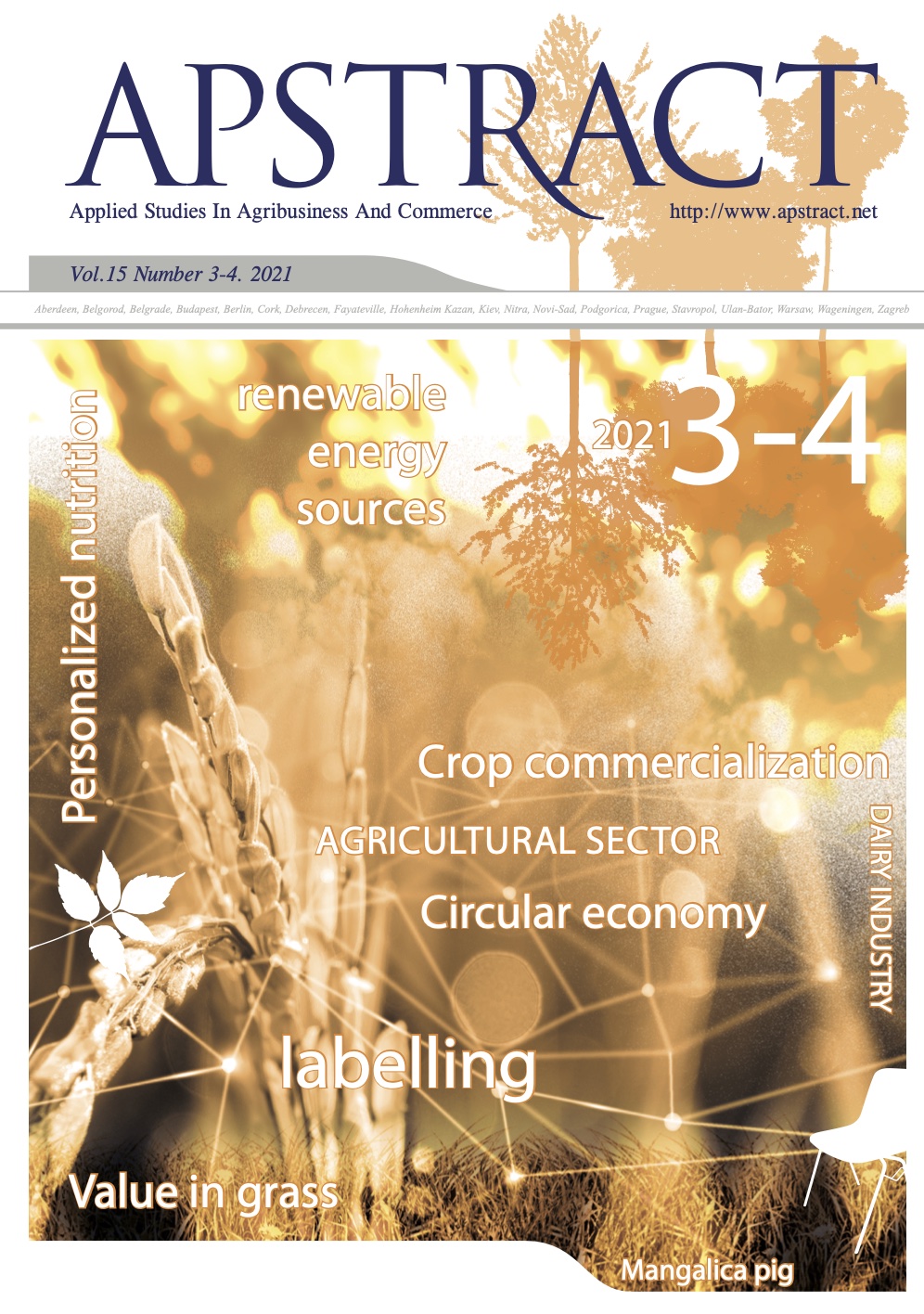The situation of agricultural sector in Hungary – trends and territorial aspects
Authors
View
Keywords
License
Copyright (c) 2021 University of Debrecen, Faculty of Economics and Business, Hungary

This work is licensed under a Creative Commons Attribution-NonCommercial 4.0 International License.
How To Cite
Abstract
Based on its geographical features, Hungary is basically an agricultural country. The proportion of the production area within the total area of the country is approximately 80% and the proportion of arable land is 60%. This makes our country one of the first in the European Union. In the EU, only Denmark and the United Kingdom have a higher proportion of agricultural land. Hungary accounts for only 3% of the total agricultural area of the EU-27 Member States, however, it plays a significant role in the production of certain products. (Harangi-Rákos, 2013)
In addition, the climate is favorable for agricultural production, which also strengthens the country's agricultural character. Throughout history, we have rightly been given the honorable name “pantry” (Marosi, 2009), which was true both within the Monarchy and Europe. In the socialist system the agricultural country became a so-called “industrial-agrarian” country due to the violent industrializations.
Beyond industrial development, the service sector plays an important role in the national economy due to its technology-intensive nature. In addition, agricultural production is still significant in Hungary (Lakner et al. 2020). The agricultural sector is significantly involved in the production of the gross domestic product (Fróna-Kőmíves 2019) and in the positive development of the export-import balance. During the 2008 world crisis, it was thanks to this sector, among other factors, that the recession that affected our country did not deepen. The domestic consumption is largely covered by domestically produced commodities (Csatáriné, 2019)


 https://doi.org/10.19041/APSTRACT/2021/3-4/7
https://doi.org/10.19041/APSTRACT/2021/3-4/7




